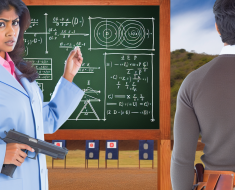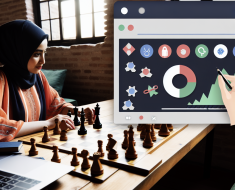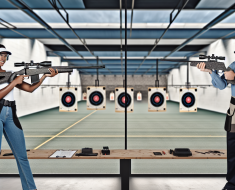How to Read a Match Course and Plan Your Strategy

In competitive shooting sports, success hinges not only on marksmanship but also on the ability to read a match course effectively and devise a winning strategy. Whether you are participating in IPSC, IDPA, 3-Gun, or other shooting disciplines, understanding the course layout, identifying key challenges, and optimizing your approach can significantly improve your performance. This article explores how to read a match course thoroughly and plan a strategy that maximizes efficiency and accuracy.
Understanding the Importance of Reading a Match Course
Before diving into the tactical elements of shooting, it is crucial to grasp why reading the course is essential. A match course is essentially a blueprint of what you will face during competition — the arrangement of targets, obstacles, distances, shooting positions, and movement paths. Each element influences how you should approach the stage.
Competitors who rush into shooting without analyzing the course often waste valuable time or miss critical opportunities for smooth transitions between targets. According to a survey conducted by Shooting Sports USA, shooters who spend at least 10 minutes reviewing each stage tend to place in the top 25% of competitors more frequently than those who do not.
By reading the course carefully:
- You anticipate challenges such as difficult target angles or mandatory reload zones.
- You identify safe zones and no-shoot penalties ahead of time.
- You optimize movement patterns to minimize wasted steps and maximize speed.
- You mentally rehearse sequences for better muscle memory under pressure.
Step-by-Step Guide to Reading a Match Course
Reading a match course requires methodical observation and strategic thinking. Here is an effective step-by-step method used by many top shooters:
1. Walk Through the Entire Stage
If possible, physically walking through the stage before the match gives invaluable perspective. This allows you to see distances firsthand, understand footing conditions (e.g., gravel vs. grass), and note any obstacles or barricades that may affect movement.
2. Identify Target Types and Positions
Most matches include various target types: paper targets scored by hit zones, steel plates that fall when hit, moving targets, or even reactive targets like clay pigeons. Recognizing which targets are most critical helps prioritize shooting order.
- Example: In an IPSC stage with both steel and paper targets, many competitors prioritize steel first as they provide immediate visual confirmation when hit.
3. Analyze Shooting Positions and Angles
Check where you can shoot from safely and efficiently. Look for natural cover points or barricades that offer protection but don’t restrict movement too much. Consider angles from which multiple targets can be engaged with minimal repositioning.
4. Plan Your Reload Points
A well-timed reload can save seconds or prevent a costly malfunction during shooting. Identify safe spots within the stage where you can reload without exposing yourself unnecessarily or losing balance.
5. Visualize Movement Paths
Mental mapping of your path through the stage helps reduce confusion during execution. Decide whether running straight through is best or if zigzagging around obstacles will provide better shooting lines.
6. Note Any Special Rules or Penalties
Each match may have unique rules about shooting order, target engagement sequences, or penalties for hitting certain objects (like no-shoots). Familiarize yourself with these details so you avoid costly mistakes.
Developing Your Shooting Strategy Based on Course Analysis
Once you’ve thoroughly read the course, translate your observations into an actionable plan tailored to your strengths and weaknesses. Here are some strategic considerations:
Pacing: Balancing Speed with Accuracy
A common mistake among novice shooters is prioritizing speed at the expense of accuracy — leading to penalties or missed targets that nullify time gains. Conversely, overly cautious shooters may have perfect hits but lose precious seconds.
- Tip: Break down each segment of the stage by difficulty level; shoot easier targets faster while slowing down for challenging shots requiring precise aiming.
Shooting Order: Prioritize Efficient Target Engagement
Selecting an optimal sequence can reduce unnecessary movement and transitions between firing positions. For example:
- Shoot clustered targets first before moving on to isolated ones.
- Tackle no-shoots from a distance if possible to avoid accidental hits.
- If there are steel targets that reset timers upon being hit (as in some matches), prioritize them early in your sequence.
Movement Techniques: Smooth Transitions Matter
Your footwork directly impacts how quickly you can get into position for each shot without compromising stability:
- Crossover Steps: Use crossover steps around barricades for fluid motion without awkward body positioning.
- Corners: Practice slicing corners rather than wide arcs to shave off unnecessary steps while maintaining sightlines on targets.
- Kneeling or Prone Shots: Plan when to drop low for difficult angles—anticipate these spots during course walk-throughs so transitions are seamless.








